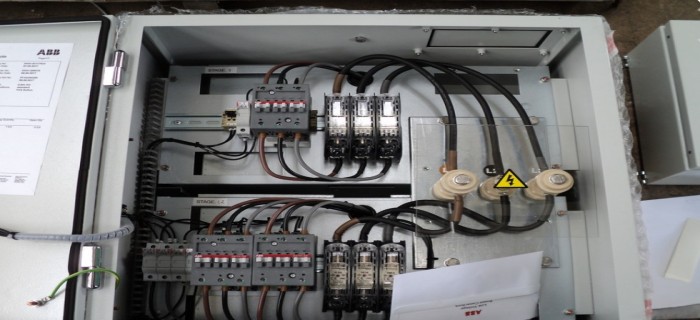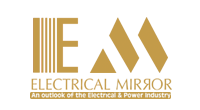
Power Factor Correction: “Getting to Know Power Factor Correction in Electrical Systems: Boosting The effectiveness and Reducing Waste”
23 Mar 2024
Power factor correction is a technique used in electrical engineering to improve the efficiency of electrical systems and reduce wastage of power. It involves adjusting the power factor of an AC power system closer to 1, ideally to unity, by adding capacitors or inductors to the circuit. In alternating current (AC) circuits, power factor is the ratio of real power (in watts) to apparent power (in volt-amperes), and it’s represented by the cosine of the phase angle between voltage and current. Power factor can range from 0 to 1, with 1 being ideal (unity power factor), where voltage and current are perfectly in phase. A low power factor (below 0.9) means that the voltage and current waveforms are out of phase, leading to inefficiencies in power transmission and distribution.
Power factor correction is typically applied in industrial and commercial settings where there are inductive loads such as motors, transformers, and fluorescent lighting. These loads cause the current to lag behind the voltage, resulting in a lower power factor. By adding capacitors to the system, which produce leading reactive power, or inductors to produce lagging reactive power, the power factor can be improved. Power factor correction offers multiple benefits for electrical systems. By enhancing the power factor, it reduces the reactive power supplied by the utility, thereby trimming overall electricity consumption and lowering bills. Moreover, it bolsters system capacity, enabling it to accommodate more loads without necessitating additional infrastructure investments. This correction also contributes to stabilized voltage levels, fostering better performance and minimizing wear on electrical equipment. Additionally, compliance with regulatory standards is ensured, sidestepping penalties imposed by utility companies for low power factors. Overall, power factor correction is integral to maintaining efficient and dependable electrical systems, resulting in both cost savings and enhanced operational performance.
Industry Research Biz: 2024 Global Power Factor Correction Devices Market Future Trends: Revealing the 2031 Outlook
The “Power Factor Correction Devices Market” is projected to experience substantial growth over the forecast period from 2024 to 2031. With a CAGR of 7.9%, the market is anticipated to expand significantly, reaching a value of USD 10,848.24 million by 2031, up from USD 6,873.37 million in 2023. This growth trajectory indicates a rising demand for power factor correction devices globally, driven by factors such as increasing awareness about energy efficiency, regulations mandating power factor correction, and the need to optimize electricity consumption in industrial and commercial sectors. As organizations seek to reduce energy costs, enhance system efficiency, and comply with regulatory standards, the adoption of power factor correction devices is expected to surge, thereby propelling market growth throughout the forecast period. In examining the future trends of the global power factor correction devices market from 2024 to 2031, several key insights emerge, shedding light on the market’s outlook and potential developments. Amidst increasing emphasis on energy efficiency and sustainability, the market is poised for significant growth, driven by a combination of technological advancements, regulatory mandates, and evolving consumer preferences. One prominent trend expected to shape the market is the continued adoption of smart and digital power factor correction solutions. These advanced technologies leverage data analytics, artificial intelligence, and IoT connectivity to optimize power factor correction processes, enhance system efficiency, and provide real-time monitoring and control capabilities. As industries and businesses strive for greater operational efficiency and cost savings, the demand for smart power factor correction devices is anticipated to rise steadily, driving market growth. Furthermore, the integration of renewable energy sources into the power grid is expected to drive the demand for power factor correction devices. Renewable energy generation, such as solar and wind power, often introduces fluctuations and variability in the power supply, leading to power quality issues and challenges in maintaining optimal power factor. Power factor correction devices play a crucial role in mitigating these challenges by ensuring stable and efficient power transmission and distribution, thereby facilitating the seamless integration of renewable energy into the grid. Moreover, regulatory initiatives and standards aimed at promoting energy efficiency and reducing carbon emissions are anticipated to fuel the adoption of power factor correction devices across various industries and sectors. Governments and regulatory bodies worldwide are implementing measures to incentivize or mandate the use of power factor correction equipment as part of broader energy conservation and environmental sustainability efforts. As compliance requirements become more stringent and energy costs continue to rise, businesses are expected to prioritize investments in power factor correction solutions to optimize energy usage, reduce wastage, and minimize operational expenses. The global Power Factor Correction Devices market is projected to experience significant growth from 2024 to 2031, with a compound annual growth rate (CAGR) of 7.9%. This expansion is expected to propel the market size from USD 6,873.37 million in 2023 to USD 10,848.24 million by 2031. The comprehensive report encompasses both quantitative and qualitative analyses, offering insights into various aspects of the market. From macro-level overviews covering market size, industry dynamics, and supply chain analysis to detailed examinations of segment markets based on type, application, and region, the report provides a holistic understanding of the Power Factor Correction Devices market landscape. By combining extensive quantitative data with exhaustive qualitative analysis, the report aims to provide deep insights into the market, enabling stakeholders to make informed decisions and capitalize on emerging opportunities within the Power Factor Correction Devices industry. The report offers a comprehensive analysis of the competitive landscape within the Power Factor Correction Devices market, providing insights into market share, concentration ratios, and other key metrics. It delves into detailed profiles of leading companies, enabling readers to gain a deeper understanding of their competitors and the competitive dynamics of the industry. Additionally, the report explores factors such as mergers and acquisitions, emerging market trends, the impact of COVID-19, and regional conflicts, providing a holistic view of the market environment and its potential challenges and opportunities. This comprehensive analysis makes the report essential reading for industry players, investors, researchers, consultants, business strategists, and anyone looking to enter or expand their presence in the Power Factor Correction Devices market.
Top Players in the Power Factor Correction Equipment Industry
Power Factor Correction (PFC) equipment lowers reactive power and guarantees a balanced supply of real power to satisfy demand, hence increasing the power factor of electrical systems. Xian XD Power, Herong Electric, Shizuki Electric, Sieyuan Electric, Socomec, Rongxin Power Electronic, Ducati Energia, Iskra, ICAR SpA, Hubbell, Guilin Power Capacitor, ABB, Schneider Electric, Siemens, Eaton, GE Grid Solutions, NISSIN ELECTRIC, and Hangzhou Yinhu Electric are a few of the industry leaders. These businesses have a substantial market share because of their wide range of PFC solutions, cutting-edge technology, widespread reach, and loyal clientele. They make use of their research and development resources to launch cuttingedge goods that satisfy consumer demands. These well-established businesses will present fierce rivalry for new competitors in this industry. On the other hand, they can increase their market share by concentrating on customization, investing in R&D, providing innovative solutions, and going after niche markets. These new players may also be able to stand out if they work with energy providers and provide all-inclusive services like installation, maintenance, and energy audits. All things considered, these businesses are essential to the expansion of the PFC Equipment market since they offer dependable and effective solutions, inform clients about the advantages of power factor correction, and propel technological improvements in the sector.
Analyzing the Power Factor Correction Capacitors Market: A Worldwide Industry Overview and Prospect (2024– 2031)
Power factor correction capacitors are essential components used to improve the power factor of electrical systems. They work by storing and releasing electrical energy to offset the reactive power in the system, thereby ensuring a balanced supply of real power to meet the demand. These capacitors are typically installed in parallel with the load and are sized according to the reactive power requirements of the system. By reducing reactive power, power factor correction capacitors help to increase the efficiency of electrical equipment, reduce energy losses, and optimize the overall performance of the system. They are widely used in various industrial, commercial, and residential applications to enhance power quality and reliability. The power factor correction capacitors market is primed for significant growth driven by multiple factors. Heightened emphasis on energy efficiency, spurred by both environmental concerns and regulatory standards, is pushing industries to adopt power factor correction solutions to optimize electrical systems and mitigate greenhouse gas emissions. With widespread industrial applications and ongoing technological advancements improving efficiency and performance, power factor correction capacitors are becoming increasingly indispensable for businesses across various sectors. This convergence of energy efficiency imperatives, environmental awareness, industrial demands, regulatory requirements, and technological progress presents a promising outlook for the market’s expansion in the foreseeable future. A significant trend in the power factor correction capacitors market is the increasing integration of renewable energy sources, like wind and solar power. With renewable energy’s growing share in the energy mix, there’s a heightened requirement for power factor correction capacitors to stabilize the power grid and counterbalance the intermittency inherent in renewable power generation. These capacitors play a crucial role in optimizing power quality, reducing losses, and ensuring grid stability, thus facilitating the seamless integration of renewable energy into the electrical grid. This trend underscores the vital role that power factor correction capacitors play in supporting the transition towards a more sustainable and renewable-centric energy infrastructure. The power factor correction capacitors market is further fueled by the rising adoption of electric vehicles (EVs). With the anticipated surge in EV adoption, there’s a corresponding increase in demand for power factor correction capacitors in both EV charging stations and manufacturing facilities. Moreover, the integration of smart grid technologies and the deployment of energy storage systems are anticipated to play significant roles in market expansion. As smart grid infrastructure evolves to accommodate EV charging requirements and optimize energy distribution, power factor correction capacitors will be essential for enhancing grid stability and efficiency. Additionally, energy storage systems, such as batteries, rely on power factor correction capacitors to manage reactive power and maximize system performance. These trends underscore the diverse applications and growing importance of power factor correction capacitors in enabling the widespread adoption of electric vehicles and advancing smart grid initiatives.


 (1).gif)
leave your comment